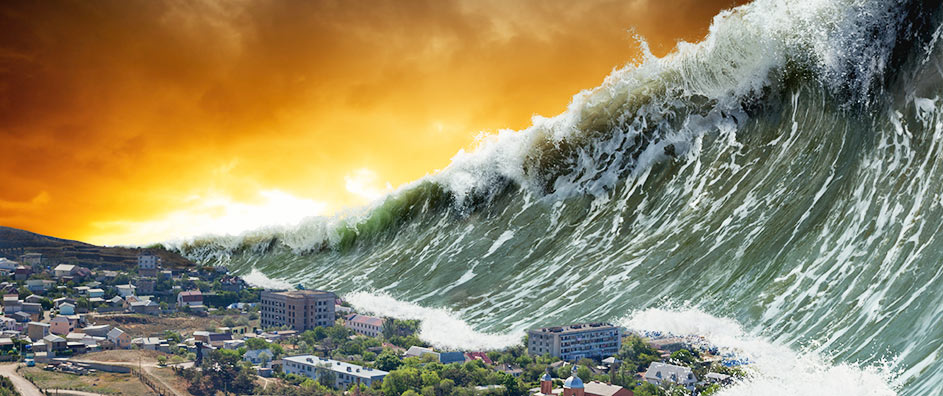In a world rife with uncertainty and existential dread, the Bahá’í teachings present a guiding framework for alleviating the primal fear of annihilation—a fear intricately woven into the human psyche. This dread, an echo of our own mortality, oftentimes finds resonance within the narrative arcs of disaster films. These cinematic explorations present not only the catastrophic potential of humanity’s technological advancements but also the very essence of the human condition: our resilience, unity, and iterative ability to confront adversity.
The challenges facing humanity today are reminiscent of these apocalyptic narratives. They compel individuals to reckon with the fragility of existence while simultaneously inspiring a collective effort toward elevation of the human spirit. The Bahá’í teachings encourage individuals to confront such fears with a hopeful heart, using the lens of both faith and creativity. Within this framework, the metaphor of disaster movies serves as a potent allegory for the cultural and spiritual conditions we must navigate.
Embracing Vulnerability
One of the first steps in addressing the fear of annihilation is the embrace of vulnerability. The Bahá’í teachings illuminate the importance of recognizing the inherent uncertainties of life. By accepting our frailty and ephemeral nature, individuals can foster a deeper connection with the present moment. Disaster movies, often portraying a global cataclysm, force characters—and by extension, the audience—to confront their mortality and the fragility of their lives. In this arena, vulnerability is not a weakness; it signifies humanity’s profound capacity for empathy and cooperation in the face of calamity.
Characters in such narratives often embark on journeys of self-discovery, cementing bonds transcending the artificial borders conceived by society. This mirrors the Bahá’í principle of oneness, which emphasizes unity within diversity. It is through these shared experiences of struggle and survival that fear transforms into collective strength, creating a tapestry of resilience emblematic of the Bahá’í commitment to fostering community.
The Role of Hope
Hope acts as a powerful counterbalance to fear. The Bahá’í teachings consistently advocate for a vision that does not shy away from the stark realities of life but rather champions the belief in the eventual triumph of good over evil. Just as protagonists in disaster films often display unwavering commitment to saving their world, the Bahá’í notion of hope instills a sense of purpose, beckoning us to act as champions of justice, community, and progress.
In numerous disaster films, the pathway seems bleak and insurmountable. Yet, amidst chaos, glimmers of hope emerge, demonstrating that every endeavor begins with a single step. This reflects the Bahá’í perspective that small acts of kindness and perseverance can inspire transformative changes. Therefore, rather than yielding to despair, individuals are called to cultivate hope, guiding others toward a brighter, unified future.
Transformative Action
The principle of service, foundational to the Bahá’í teachings, underscores the importance of taking action in the face of adversity. Disaster films often depict heroic figures—those who rise amidst destruction. This archetype symbolizes the inherent potential within every individual to enact change. The Bahá’í faith beckons followers to rise against the tide of negativity and choose engagement over apathy, thereby fostering a culture of proactive citizenship.
In facing societal fears, disaster movies provide individuals with narratives that inspire transformative action. They encourage an examination of personal and communal roles in combating crises, urging viewers to ponder how they might contribute to remedying societal ills. This notion aligns with the Bahá’í commitment to social justice, fostering a sense of shared responsibility for the betterment of humanity.
An Emphasis on Unity
Disaster narratives, in their essence, reveal a universal truth: in times of crisis, the boundaries that divide us fade away. They invoke an acute awareness of our shared humanity and the need for unity. The Bahá’í teachings — illustrating the importance of interconnectedness — echo this sentiment, asserting that humanity’s progress hinges upon collective collaboration rather than individualistic pursuits.
The depiction of communal solidarity in disaster films serves as a microcosm for the Bahá’í vision of a world engaged in the cooperative endeavor of addressing its shared challenges. It is through oneness that humanity finds strength, a concept that transcends cultural and geographical divides. This lens allows individuals to reframe their fears not as isolating experiences but as opportunities for deeper connections and collaborative efforts.
Conclusion: The Path Forward
As we navigate through our collective anxieties about annihilation, the Bahá’í teachings provide a guidepost—illuminating a path wherein vulnerability transforms into strength, hope ignites purposeful actions, and unity overcomes division. Disaster movies, with their vivid portrayals of calamity and resilience, offer a narrative we can utilize as a metaphorical framework, prompting reflections on our roles in alleviating fear and fostering shared aspirations.
The journey of confronting existential dread is fraught with challenges, yet it is also rich with potential for growth and transformation. By engaging with the emotional themes presented in this cinematic genre and the profound wisdom of the Bahá’í teachings, we can cultivate a life imbued with purpose, connection, and an unwavering commitment to the flourishing of all humanity.
